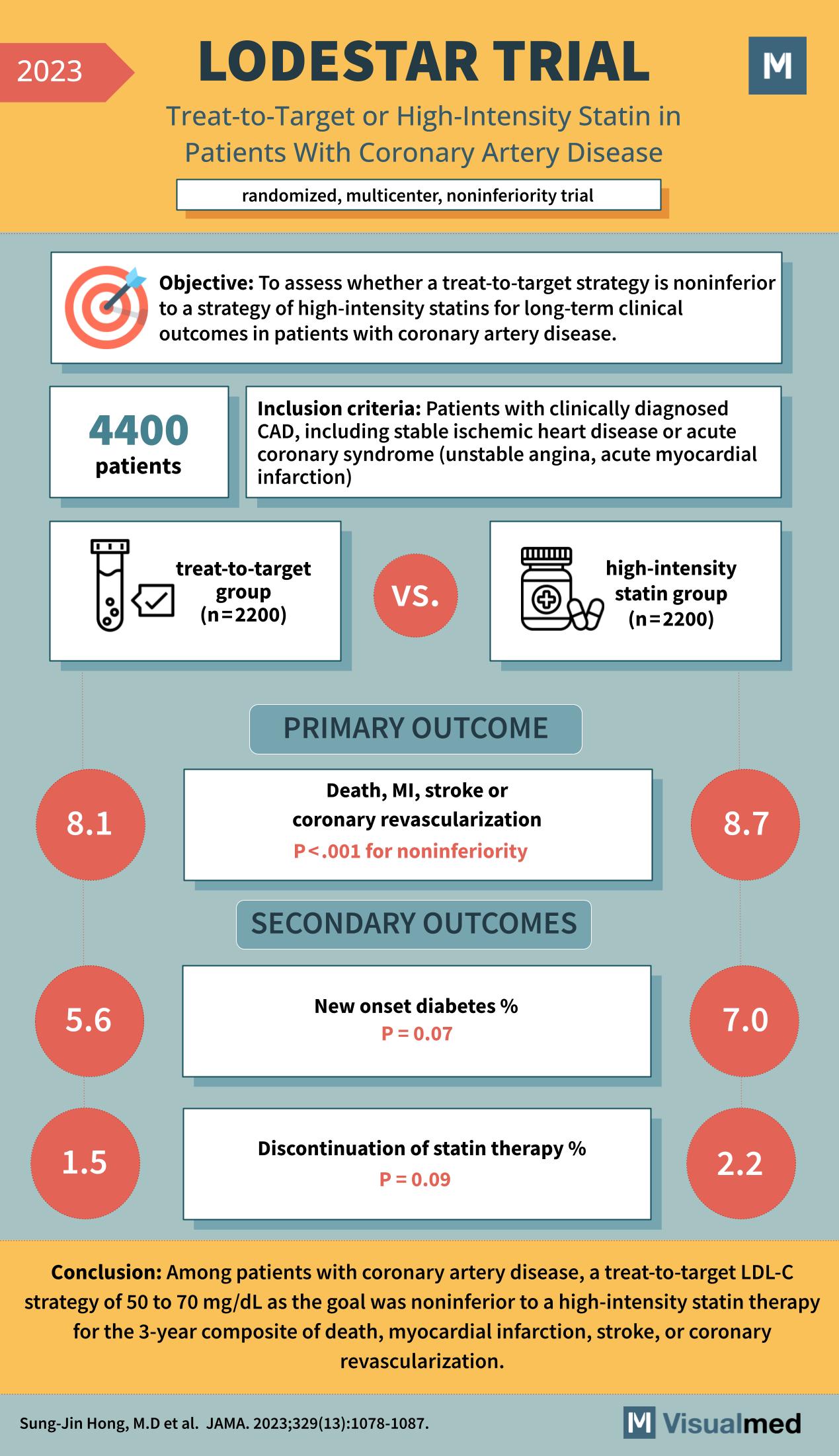
The LODESTAR trial, as featured in JAMA in 2023, was a randomized, multicenter, noninferiority trial focusing on coronary artery disease (CAD) treatment strategies. The objective was to assess whether a treat-to-target strategy for low-density lipoprotein cholesterol (LDL-C) is noninferior to a strategy of high-intensity statins for long-term clinical outcomes in patients with CAD.
The trial enrolled 4,400 patients with clinically diagnosed CAD, including those with stable ischemic heart disease or acute coronary syndrome such as unstable angina or acute myocardial infarction. Participants were divided into two groups: the treat-to-target group (n=2200), aiming for an LDL-C goal of 50 to 70 mg/dL, and the high-intensity statin group (n=2200), which did not have a specific LDL-C target.
The primary outcome was the composite of death, myocardial infarction (MI), stroke, or coronary revascularization. The results indicated that the treat-to-target strategy had a primary outcome event rate of 8.1% compared to 8.7% in the high-intensity statin group, with a p-value of less than .001 for noninferiority, suggesting that the treat-to-target approach was at least as effective as high-intensity statin therapy.
Secondary outcomes included the incidence of new-onset diabetes and the discontinuation of statin therapy. The treat-to-target group had a lower percentage of new-onset diabetes (5.6% vs. 7.0%) and a lower rate of statin discontinuation (1.5% vs. 2.2%), though these differences were not statistically significant (p=0.07 and p=0.09, respectively).
The conclusion of the LODESTAR trial was that for patients with CAD, a treat-to-target LDL-C strategy was noninferior to high-intensity statin therapy for a 3-year composite of death, MI, stroke, or coronary revascularization. This suggests that setting and achieving specific LDL-C targets could be an effective approach in the management of CAD without increasing the risk of diabetes or statin discontinuation. The LODESTAR trial provides important insights into the management of lipid levels in patients with CAD and supports the use of individualized treatment goals.